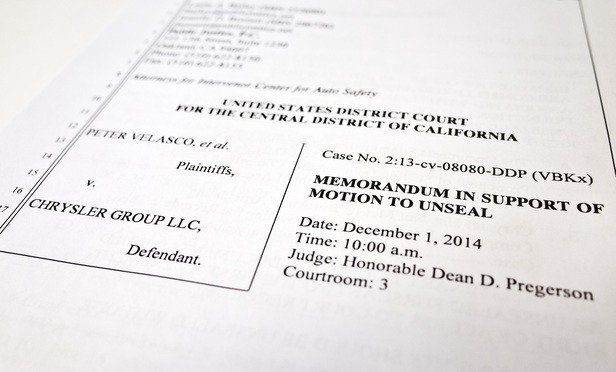But to paraphrase an old aphorism: justice must not only be done; the public must also see justice being done. The public’s trust in the judiciary is strengthened when it can see just how seriously our judges respect and honor their duties and the judicial office. This means that the judiciary should be committed to openness, transparency, and ensuring that the public’s right of access to the courts is meaningfully realized.
And yet, when it comes to public access, our federal courts are woefully behind. For the most part, anyone who wants to watch a hearing must show up at the courthouse in person. That means valuable time and expense in travel, parking or transportation costs.
It gets worse.
Even if you show up to the courthouse, you might not get in: at the Supreme Court, people might wait hours in hopes of securing one of the handful of seats available to the general public.
Openness, transparency and accessibility mean more than physically unlocking the actual courtroom doors. They mean keeping up with modern standards of public access, and today that means live-streamed video and audio over the Internet.
Yet we don’t currently have regular real-time audio or visual access over any technological platform in most federal courts. The Supreme Court and the lower federal appellate courts handle some of today’s most sensitive and significant issues, yet the public is effectively prevented from viewing or listening to their public deliberations.
Defenders of the status quo sometimes say that the courts — and particularly the Supreme Court — are special, and their work should be less open to the public than Congress’s or the President’s, because the voters need to know what their elected officials are doing.
They contend that courts, by contrast, are accountable to the Constitution, not the people, so the people don’t need to know as much about them. This is a troubling argument; in a constitutional democracy like ours, one might think that the work of the branch that is the least accountable to voters should be the most visible.
If our federal judges look around, they’ll see that they are nearly alone among other American courts. State Supreme Courts routinely webcast their proceedings. The Florida Supreme Court, which has offered live video of its proceedings since the 1970s, now streams its hearings on Facebook Live. According to the National Center for State Courts, most states allow cameras in trial courts.
The public should be able to witness these important moments in real time without trekking to courtrooms across the country. As we enter the third decade of the 21st century, the technical capabilities to open up court proceedings are robust, and the public has become accustomed to consuming information live and in real time. The federal judiciary should be keeping pace.
As chair of the House Judiciary Subcommittee with jurisdiction over the courts, I am committed to improving the public’s access to the courts. I hope to highlight the inadequacies of the status quo at a hearing on September 26th.
The hearing will not only examine why the federal judiciary continues to lag behind in video and audio coverage of its proceedings but will also consider other obstacles to transparency. These include recent reports that the federal judiciary does not adequately police parties’ requests to keep court filings sealed.
The First Amendment and centuries of court cases tell us that court records should be public unless there is a truly compelling reason to keep them secret. But the apparent lack of judicial oversight in some instances has resulted in information of great public interest — such as the opioid crisis — remaining buried in court filings, which we might not even realize but for the diligent work of investigative journalists.
Addressing these obstacles also includes making such court filings, when they are not under seal, available to the public for free on a platform that is user friendly. The current system for public access to court records, PACER, is clunky and costly. Anyone who wants to read the arguments lawyers make in their briefs to the court must pay for each page they download. At 10 cents a page, it could easily cost hundreds of dollars to follow even a single case.
As skepticism of government institutions becomes ever more pronounced, this is a particularly critical time for our federal courts to publicly recommit themselves to openness, transparency, and accessibility by examining these obstacles to public access and moving forward with meaningful modernization efforts. As the branch of our federal government responsible for deciding cases that have an impact on us all, the federal judiciary needs to do more to ensure that its administration of justice is seen by all.
Congressman Hank Johnson (GA-04) is a senior member of the House Judiciary Committee and the Chairman of the Judiciary Subcommittee on the Courts, Intellectual Property and the Internet.
###









































